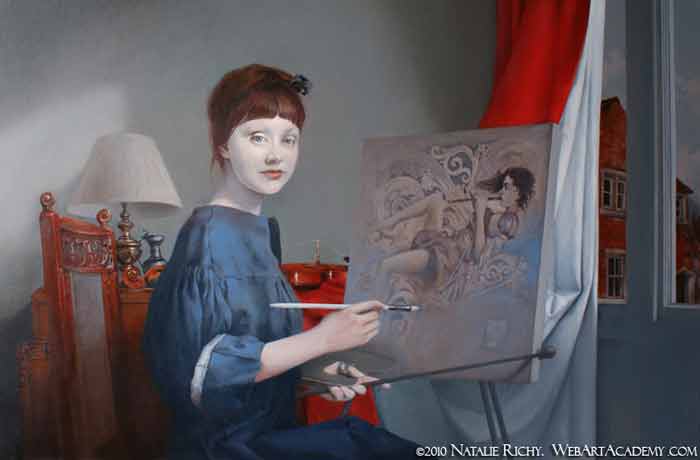Traditional oil painting technique

The Video Lesson “How to Paint a Portrait in Oil”
demonstrates the oil painting technique in the style of an 18th century Paris salon, explained in specific, sequential steps. From the positioning of the figure to the details of the background, this easy-to-follow process will give you the discipline and focus that the difficult art of portraiture demands.
Oil painting is the process of painting with pigments that are bound with a medium of drying oil — especially in early modern Europe, linseed oil. Often an oil such as linseed was boiled with a resin such as pine resin or even frankincense; these were called ‘varnishes’ and were prized for their body and gloss. Other oils occasionally used include poppyseed oil, walnut oil, and safflower oil. These oils confer various properties to the oil paint, such as less yellowing or different drying times. Certain differences are also visible in the sheen of the paints depending on the oil. Painters often use different oils in the same painting depending on specific pigments and effects desired. The paints themselves also develop a particular consistency depending on the medium.
Although oil paint was first used for the Buddhist Paintings by Indian and Chinese painters in western Afghanistan sometime between the fifth and ninth centuries,it did not gain popularity until the 15th century. Its practice may have migrated westward during the Middle Ages. Oil paint eventually became the principal medium used for creating artworks as its advantages became widely known. The transition began with Early Netherlandish painting in northern Europe, and by the height of the Renaissance oil painting techniques had almost completely replacedtempera paints in the majority of Europe.
In recent years, water soluble oil paint has come to prominence, to some extent replacing the usage of traditional oils. Water soluble paints contain an emulsifier which allows them to be thinned with water (rather than with paint thinner), and allows very fast drying times (1-3 days) when compared with traditional oils (1-3 weeks).



Most of my paintings need a day or two to dry, I can’t imagine how it was to wait 3 weeks.